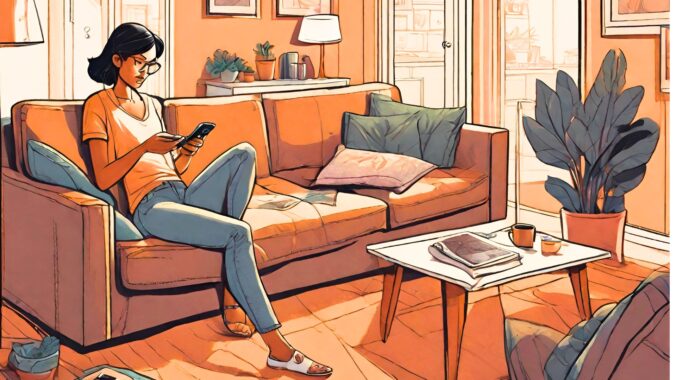When I moved to Dallas from overseas years ago, I remember renting a truck and driving around the city to pick up cheap furniture at IKEA and from Craigslist to fill my apartment. While I was able to find some good deals, I also remember how sore my back was the next day from moving and carrying heavy stuff all day.
If I had to do it again today, I would take advantage of all the amazing advances made in e-commerce to order most of the furniture online. It is estimated that the global market for furniture will reach $873 billion by 2030, with 35% coming from online purchases.
Companies like Wayfair saw a boom in sales during the pandemic. While revenues are down compared to their peak, Deutsche Bank Aktiengesellschaft increased its price objective for Wayfair from $63.00 to $79.00. So how come people buy more and more furniture over the internet? And, what are some products available for purchase today that were merely a dream a decade ago?
Why is Furniture Easier to Buy Online?
A recent survey reported that a third of customers aged 25 to 50 are already buying furniture online. One can argue that the younger generation prefers shopping online over going to brick-and-mortar stores. But that can’t be the only reason why buying furniture online gained popularity.
A pain point when shopping for furniture online used to be poor visuals and the difficulty in imagining how the item would look in your house. Of course, thanks to high-resolution pictures and videos, it is easier to see textures and patterns. But retailers are doing much more to improve their conversion rates. Amazon has a very convenient tool on their app that uses augmented reality and shows on the customer’s screen what a piece of furniture would look like in his living room, using the phone’s camera. Finally, customer reviews, but also product reviews on social media, are great tools that can help customers make informed purchases, even on more expensive/complex products.
For brands with retail stores, customers still have the option to see the item in-store and order online. Retailers are putting in more and more effort into omnichannel, making it easier for customers to shop across different channels.
Despite furniture typically being bulky and heavy, delivery is much faster than it was 15 years ago. Returns can still be a problem, and the cost of returns is often a major complaint from customers. But even then, companies like Amazon have very liberal return policies in the worst-case scenarios.
More and More Items Can be Purchased Online
What isn’t sold online these days? The most expensive item sold on eBay is a 400ft, $168M megayacht (https://inshorts.com/en/news/most-expensive-item-sold-on-ebay-is-a-yacht-1472895517355). There are now websites that allow you to send a message printed on a potato (https://potatoparcel.com/), or to buy Vampire Repellent sprays (https://www.interwovencollaborative.com/products/vampire-repellent-8oz).
Beyond these weird items, 15 years ago I never thought I’d be buying fridges, lawnmowers, or large TVs online. But if I can get a better deal than at the store, including shipping and with fast delivery, why shouldn’t I?
But it doesn’t stop there. Starting in 2024, Amazon plans to revolutionize car buying by letting customers purchase Hyundai cars online directly from its platform. The concept is easy to understand: customers can search for new Hyundai cars, configure them, and complete the transaction directly on Amazon, choosing between home delivery or pickup at their local dealership. We’re only talking about one brand here, but I wouldn’t be surprised if we could have a broader selection of cars by the end of the decade.
Finally, B2B e-commerce is growing faster than ever, thanks to the new generation of buyers. Millennial and Gen Z buyers don’t want to talk on the phone to place an order; they want to shop for industrial parts or heavy machinery like they would shop for socks on Amazon. Last year, Caterpillar sold over $2 billion worth of equipment online. Most people don’t expect this type of company to be so active online, but many are investing more and more in e-commerce.
Conclusion
Selling furniture or other expensive and bulky items still isn’t as easy as selling cat socks. The sheer size of these items makes it costly and difficult to store and ship. Returns are still a nightmare for many businesses. However, it is clear that customer behavior and expectations are changing. Online marketing and merchandising have made great progress to improve the customer experience. I believe social media marketing will be key for furniture retailers to give customers the confidence to place their purchases online. Finally, a great omnichannel experience could drive more traffic to retail stores, where the average order value is higher.

